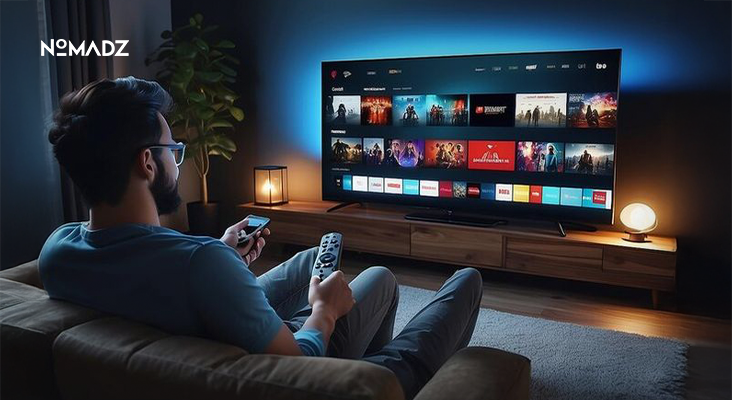Retail Media Networks: The $200 Billion Opportunity in 2026
Advertising is evolving rapidly, and one of the most significant changes that we are experiencing is the emergence of the retail media networks. What was once an experimental ad channel a few years ago has now become one of the largest sources of revenue for both brands and retailers.
It is projected that global retail media advertisement spending will be approximately $ 170 billion in 2025. However, this is not the end of the story; analysts currently estimate that retail media networks will exceed $ 200 billion in global ad spending by 2026. That is a huge increase and an indicator that this channel is redefining brand communication with consumers.
So what’s fueling this growth? And what does this mean to marketers in 2026? Let’s break it down.
What Exactly Are Retail Media Networks?
You have probably seen a sponsored product on Amazon, a brand banner on the Walmart website, a shoppable video on Instacart – you have come into contact with a retail media advertisement.
Retail media networks are digital advertising networks owned by retailers that enable brands to advertise their products on the websites or apps of that particular retailer. They leverage useful first-party data (such as customer shopping behavior and purchase history) to present ads to individuals who are already in the purchasing mindset.
To put it bluntly, it is advertising that catches shoppers at the very moment of making a purchase, and that is why it is booming so fast.
The Numbers Tell the Story
The marketplace advertisement spending continues to increase year after year, and retail media networks are at the head of the trend. By 2026, the proportion of retail media in the global digital ad spend is projected to reach over 20 percent, with some experts estimating it even goes beyond 200 billion.
Such growth is faster than most conventional and digital channels, and retail media has become one of the most popular digital marketing trends going into 2026.
It is also an indication of the growth of e-commerce itself. The online shopping method is gradually being adopted as the new standard, and therefore, e-commerce advertising on retailers will now be a central aspect of any brand strategy.
Also Read: Global Digital Ad Spend Surpasses $750 Billion in 2025
Why Retail Media Is Booming?
Let us discuss the major causes of this enormous retail advertising expansion:
1. The Power of First-Party Data
As the laws on privacy continue to tighten and third-party cookies go away, advertisers are having a difficult time targeting the right audience. Instead, retailers can access the information on customers directly, what they purchase and read, and when they go shopping.
That is why retail media networks are a treasure trove of brands that strive to deliver the ads that are relevant but do not break privacy regulations.
2. Sale-Driving Advertising
Retail media is related to sales, unlike social media advertising or TV commercials. Brands are able to easily monitor the number of people who saw an advert and clicked the advert, and purchased the product. This is a clear payback that renders the retail media immensely attractive to advertisers.
3. The Omnichannel Shopping Upcoming
Consumers no longer go to a single shopping center. They shop on the internet, consult prices inside the shops, and even shop via mobile apps. Retailers are retaliating with more retail media advertisements in all touchpoints, websites, applications, email, and even in-store digital screens.
This experience of the omnichannel keeps the brands in sight wherever their customers go.
4. International Adoption outside of the US
Retail media is no longer a trend in America only. The retail media networks are attracting huge investments by countries such as the UK, India, Brazil, and China. As additional retailers all over the globe, such as Carrefour, Tesco, and Flipkart, establish their own ad networks, the world market will burst in 2026.
Emerging Retail Media Trends for 2026
With the current market maturity, there are a few retail media trends that are defining its future:
- Off-site advertising: The retailers are now employing their information to reach out to people beyond their platforms- on the web and social media.
- Video and streaming advertisements: CTV (Connected television) and Shoppable video advertisements are emerging as major participants in the retail media arena.
- AI and automation: Retailers are using AI applications to customize advertisements on the fly, leading to better performance and efficiency.
- Work together to measure success: Brands and retailers are collaborating to develop more transparent campaign success measurements.
- The trends explain it all: retail media is changing, not just banner advertisements. It is already turning into a full-blown digital ecosystem.
What does this mean for Marketers?
Retail media networks should be high on your list in case you are a marketer and have to prepare your 2026 strategy. Here’s why:
1. It’s No Longer Optional
Retail media is no longer a niche test anymore; it is mainstream. Brands that disregard it face the danger of losing visibility at the very point of purchase decision-making by customers.
2. You Can Target Shoppers at the Instant.
Retail media is targeted to individuals who are currently working on shopping, unlike conventional digital advertising. That is because your ad money is going to warmer leads with a high likelihood of conversion.
3. Data-Driven Insights
The retail media offers easy-to-monitor outcomes. You are able to see what performs, optimize fast, and directly relate ad impressions and sales, which most channels cannot do effectively.
4. Room for Creativity
Don’t believe that retail media is all search listing. Sponsored videos, shoppable posts, and interactive placements are getting increasingly popular as creative formats. It provides a brand with an opportunity to shine with smart, creative storytelling, not only promotions.
Challenges to Watch Out For
Of course, there are still some bumps in the road:
- Division of platforms: It can be complicated to control so many networks Amazon, Walmart, Instacart, Target, and so forth.
- Measurement loyalty: All processes of the retailers measure success in different ways, so it is difficult to compare performance across platforms.
- Competition and cost: This is due to the increase in advertisement costs, particularly in the busy seasons, as more brands compete in the retail media.
Nevertheless, the advantages significantly outweigh the troubles, especially with the continued advancement in technology, which has become standardized.
Also Read: Campaign Strategies That Won Big on Social in 2025
The Road Ahead
In the future, the retail media networks will be at the center of brand advertisement and sales online. With the world expenditure exceeding 200 billion in 2026, marketers will be forced to change at a fast pace to remain relevant.
To take the best advantage of this growth:
- Give a definite share of your advertisement budget to retail media.
- Segment through a variety of retailer networks.
- Personalize your ads using data and AI.
- Those measurement tools that demonstrate real ROI should be invested in.
- Work hand in hand with retail partners.
Final Thoughts
The digital advertising future is retail-based. With the continued increment of e-commerce advertising and the increasing number of retailers entering the fray, the retail media network will form an indispensable component of any brand strategy.
This will be a colossal advantage to marketers who adopt this change early (testing, learning, and optimization). After all, those brands that come to customers at the point of shopping are the ones that win.









Leave feedback about this